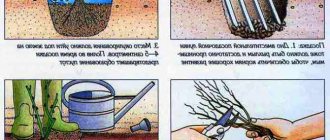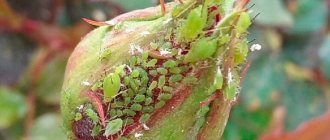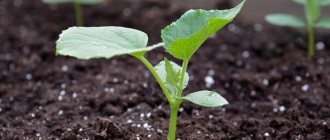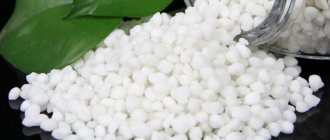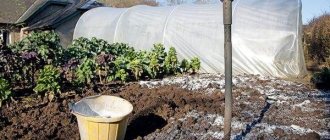Indoor roses are very demanding when it comes to feeding, because they produce a lot of buds. And the flowering period is quite long. Therefore, the supply of nutrients in the pot quickly runs out. Both purchased and natural products can be used as fertilizing.
In recent years, roses in a pot are increasingly being given or bought for oneself. This purchase will allow you to admire the flowers for several years in a row. Read the article on how to fertilize indoor roses.
Ground roses at home
Often, plants that are usually grown in open ground are transplanted into tubs and kept at home. This is not a very effective method, since it is difficult to organize conditions for keeping the rose close to street conditions. If you have a greenhouse where the temperature in winter is between 5 and 10 degrees, then it is suitable for growing flowers. The fact is that the rose is not a tropical plant and it needs to adhere to the regime of summer and winter. Tropical palms and ficus trees are more likely to grow in warm climates and high humidity.
Watering
Indoor roses require daily watering in the summer . In this case, the water from the pan must be drained, as it prevents the flow of air to the roots, and they can begin to rot. Water for irrigation should be warm. Tap water must first be settled to remove chlorine compounds.
Bathing is required periodically to remove dust from the leaves. In summer, it is necessary to spray the leaves on both sides in the morning or evening. On rainy days, when air humidity is high, the procedure may not be carried out, since excessive humidity provokes fungal diseases.
In winter, if the temperature is maintained, roses at home are rarely watered and sprayed. In a cold place, watering is carried out after the soil in the pot has completely dried. If a domestic rose overwinters at room temperature in dry air, then it is sprayed with a spray bottle 2 times a week.
Trimming
It is best to prune the flower in the spring with 10 hours of daylight, when the crop is actively developing, or in the fall, before wintering. When pruning, branches that have lengthened over the winter, weak shoots, and dried flowers are removed. Use a sharp knife to avoid leaving ragged areas that could cause the plant to die. Trim branches to 5mm above outward-facing buds. Be sure to make oblique cuts. There are the following types of pruning:
- Light - 2/3 of the stem length is removed. This treatment method is recommended for vigorous bushes. Do not prune your indoor rose this way for several years in a row, otherwise it will become very elongated and will not bloom.
- Moderate – approximately half the length of the stem is removed. Use this method if you have an adult indoor rose at home.
- Strong - used if the plant is young or needs to be renewed. The shoots are cut to the level of the third and fourth buds from the base.
PRUNING A ROSE. When and how to prune an indoor rose correctly! Watch the video
Transfer
Roses are replanted periodically to stimulate the growth of the root system. Carry out the process carefully so as not to damage the plant. Each time you need a pot larger than the previous one by 5 centimeters in diameter and height. It is believed that the best material for a pot is ceramics or clay, but you should buy natural material and not plaster fakes.
In plastic, the soil dries out quickly and the plants do not breathe well. True, there are modifications of pots that do not require additional drainage. Such containers are suitable for sick plants to ensure better air flow to the roots.
Transshipment of roses is usually carried out at the end of summer or before the start of the spring growing season.
Reproduction
Roses are propagated by cuttings. To do this, select a completely lignified section of the stem with buds, of which there must be at least four. The branches are cut to about 15 cm and placed in water. You can add a growth stimulator, which is sold in flower shops. Experts recommend an infusion of willow branches: pour boiling water over finely chopped stems and leave for a day. Next, they are used to germinate rose cuttings.
Yeast is a good stimulant. The cuttings are soaked in yeast water for a day - 1 liter of water and 100 g of yeast - after which they are placed in clean water.
Honey water protects the cuttings from rotting and provides all the necessary microelements for successful rooting of the rose.
Varieties of domestic roses
The varieties of roses most suitable for growing at home are:
- miniature;
- indoor;
- ground cover (soil);
- hybrid tea;
- polyanthaceae;
- Floribunda roses;
- Chinese.
These roses can be kept in large containers, taken outside in the spring, or planted in the soil. An advantage for growing large plants will be the presence of a winter garden, where you can create favorable conditions for wintering.
Fertilizers for indoor roses
Indoor roses are the most demanding plants when it comes to feeding. This is due to abundant flowering and nutrient consumption during this period. Fertilizers for indoor roses can be used either purchased or prepared at home.
Nutrient mixtures should be added based on the needs of the plant: in the fall - phosphorus and potassium, in the spring - nitrogen and potassium. Both root and foliar feeding are used.
In order to decide what to feed your domestic rose at home, you need to know during what period the intensive consumption of nutrients occurs.
In spring, shoots and foliage begin to grow. The main fertilizer during this period is nitrogen. To increase flowering time and avoid bud drop, it is necessary to apply potassium. Nitrogen and potassium are found in manure or chicken manure, which can be purchased in dry form at the store. At home, you will need to dilute these substances according to the instructions and water the plants twice a month.
Video: Fertilizing roses
The disadvantage of organic fertilizer is the lack of phosphorus in its composition, which affects the formation of the root system. Without a developed rhizome, the foliage and shoots of an indoor rose will be weak. Flowering may not occur. Therefore, it is advisable to add phosphates to the soil in the fall. This is a mineral fertilizer that is not toxic to roses. But still, you should adhere to dosages, since with an excess of phosphorus in the soil, indoor roses experience a deficiency of microelements - in this case, manganese.
The amount of fertilizer for roses must be calculated based on the volume of the pot or tub.
Foliar feeding for indoor roses is carried out during the summer. They are both a means of protection against disease and food for the leaves.
Complex mixtures
Once a month, indoor roses are fed with complex microelements. During the period of active flowering, plants very quickly consume magnesium, manganese and calcium.
Complex mixtures in dry form are used before planting. They contain a balanced set of nitrogen, potassium and phosphorus. For other plants, it is better to make nutrient solutions so as not to burn the roots. For each type of fertilizer, instructions for use are provided.
If you want to experiment and find out why roses bloom best, then it is recommended to try preparing a “delicacy” for indoor roses at home - an infusion of banana peels. It is better to use natural additives than to feed a rose in a pot with chemicals with a similar composition.
Banana peel fertilizer
The lack of potassium for miniature indoor roses can be successfully compensated for by kitchen waste - banana peels. They contain large amounts of phosphorus, magnesium, calcium and potassium. Bananas don't have much nitrogen.
To prepare the infusion, you need to pour three skins with three liters of water and leave for 2 - 3 days . Then you can water the soil under the roses. This infusion also helps against aphids that grow on plants. Banana contains papain, a natural enzyme that can dissolve organic matter, so insects try not to come into contact with this substance. It is enough to spray the leaves and within a day the aphids will disappear.
There are other ways. For example, dry the skin in the oven, then chop it and pour it into the ground when planting. It is not recommended to leave such fertilizer on the soil surface, as this leads to the development of mold.
Fresh banana peels are cut with scissors and applied to the soil. After some time, it is completely absorbed by microorganisms.
How to resuscitate?
One of the biggest problems with indoor roses is spider mite damage. They get rid of it either by increasing the humidity (including frequent bathing of the bush in the shower) or with a “ Fitoverma ” solution (2-3 treatments will be required with a break of a week between them).
A regular soap solution helps against aphids and other pests (it is preferable to use laundry soap).
If the leaves are affected by fungus, then they need to be plucked. Treat healthy leaves or the entire bush with “ Fitospirin ” or similar fungicidal agents.
If the plant suddenly begins to wither and dry out, it means that it does not have enough watering. Dried parts must be removed immediately and the rose placed in a tray with water. At first, spray the entire bush more often.
The main problems in caring for indoor roses
Indoor plants are susceptible to diseases that are associated with a lack of nutrients and the action of insects - aphids, mites. Also, if watering is improper, the process of root rot may begin.
Pest Control
To destroy pests of indoor plants, you can use ready-made solutions - acaricides .
When purchasing, leaves must be inspected for the presence of spider mites. If there are traces of its presence, then the first thing you need to do is wash the leaves of the plant with laundry soap. This will wash away the pest eggs that have already been laid. Leave the soap on the leaves for 3 hours, then rinse and put the bag on the bush. It is necessary to keep the plant under the hood for a day. Spider mites cannot tolerate moisture and the entire brood dies.
This is what he looks like
Spider mites have natural enemies - they are also mites, but they feed on eggs and the spider mites themselves. Sold in flower shops. It is necessary to leave the package with predators near the plant. You should not be afraid of these insects: as soon as they destroy the pests and are left without food, they will soon die.
Diseases of domestic roses
If not properly cared for, traces of diseases appear on the leaves:
- brown spots – fungal infection;
- gray coating on the leaves – gray rot;
- yellow spots – powdery mildew;
- purple color of foliage - lack of phosphorus.
The cause of diseases of indoor roses is insufficient or excessive watering, lack or large amounts of fertilizers, poor ventilation in the room or lack of sunlight.
Acclimatization of roses after purchase
It is not recommended to immediately replant or disturb a newly acquired rose bush. It is necessary to give the plant time to get used to new conditions - humidity and air temperature. After three weeks, you can begin to select a new pot, which will be slightly larger than the transport one. The new soil will have enough fertilizer for about a month, then you can start feeding it - alternately with organic matter and mineral mixtures.
Answers to popular questions
After the purchase, the rose dropped all its buds and leaves.
A very common situation that occurs mainly due to the acclimatization of the rose. There is nothing wrong with this process. Unless the plant blooms next time soon (perhaps only next season).
When should you water a flower?
There's a big problem with this. Often people are looking for a certain periodicity, a kind of rule, but it is best to feel the soil (or poke it with a small wooden stick). If the soil does not stick, then it is time to water the soil.
Where is the best place to place the pot?
If the pot will be placed indoors, it is better to leave it on the southern or eastern windowsills. In the summer, it is advisable to try to take the rose out into the fresh air and leave it in a shady, cool place for the entire season.
Why did yellow stripes appear on the leaves?
Perhaps the bush is affected by bacterial cancer. In this case, it is almost impossible to save the plant. It will have to be dug up and destroyed (burned).
Fertilizer and care calendar
Starting from the end of winter, the rose must be moved to a warmer room, where it will gradually begin to wake up. During this period, branches are pruned and nitrogen and potassium fertilizers are applied - in the form of organic mixtures. This technique leads to increased shoot growth and bud formation.
Next, during the summer, you should trim off the fading buds so that they do not take away nutrients from the new ones. In summer, organic and mineral fertilizers are alternated. Microelements are added twice a season. Foliar feeding is used as needed if there are signs of deficiency of certain substances.
Video: A complete guide to proper care of indoor roses
Fertilizing indoor roses in the fall is carried out with phosphorus-potassium fertilizers. As an option - phosphorus separately and mullein infusion separately.
At the end of the flowering period, you should cut off all dried buds, remove petals and fallen leaves from the soil so that pests or fungus do not infest them, and send the rose bush to a cool room for wintering.
Feeding seedlings after planting in spring
When planting a rose seedling, the hole is filled with fertilizers according to the following scheme:
- humus or rotted manure 5 kg;
- wood ash 1 cup;
- complex mineral fertilizer 2 tbsp. spoons.
All components are mixed with soil, and a rose is planted in this mixture. This amount of nutrients is enough for the development of the plant until next spring. Additionally, the rose is not fed.
In spring, the feeding scheme for young roses is no different from fertilizing adult bushes.


